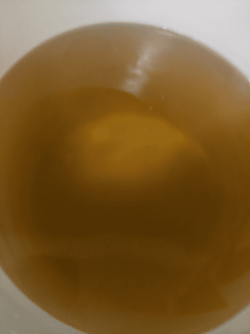- Joined
- Oct 29, 2020
- Messages
- 568
- Reaction score
- 0
So the YouTube thing got me onto a couple videos about this “old tank syndrome” thing.
I’ll preface this post by saying that I have NOT done my homework entirely on this subject... So I’m after long time fish keepers input on this one as part of my reading.
Essentially, what I’ve been able to conclude, is that it is a gradual build up of nitrates and other nasties over time that your fish become accustomed to slowly. Then it becomes almost unbearable to new fish added to the aquarium and there is a toxicity of nitrates and other things that will almost always kill off new fish.
what a time to come across this new possible tank situation, as the weekend just passed was supposed to be my filter, tank deep clean weekend.
but because of the varying levels of my concussion recovery, I opted only for the 25% water change (with the gravel vac).
I’ve also deducted that this condition of water quality is brought on mostly by lack of weekly maintenance and just “topping up water” instead of changing water out.
Im down to checking water once every two weeks, because the parameters don’t change much week to week.
In the spirit of being diligent, I checked tonight, everything checks out okay, except the nitrates have gone from being just over 10ppm to just under 20 ppm in a week.
I feel that’s pretty significant, and because this tank is getting to that mature stage, I don’t want to make any major changes, so the question lies in, do I do some bigger water changes and get nitrates down, or do I wait it out and clean the tank/filter out this weekend?
i have no fish in quarantine to add to this tank, and the fast growing plants I have are going crazy with new growth.
i also keep a sponge over the intake of the canister filter intake, and that gets cleaned in tank water with every weekly water change. It significantly reduces the debris build up in the canister filter media.
I’ll preface this post by saying that I have NOT done my homework entirely on this subject... So I’m after long time fish keepers input on this one as part of my reading.
Essentially, what I’ve been able to conclude, is that it is a gradual build up of nitrates and other nasties over time that your fish become accustomed to slowly. Then it becomes almost unbearable to new fish added to the aquarium and there is a toxicity of nitrates and other things that will almost always kill off new fish.
what a time to come across this new possible tank situation, as the weekend just passed was supposed to be my filter, tank deep clean weekend.
but because of the varying levels of my concussion recovery, I opted only for the 25% water change (with the gravel vac).
I’ve also deducted that this condition of water quality is brought on mostly by lack of weekly maintenance and just “topping up water” instead of changing water out.
Im down to checking water once every two weeks, because the parameters don’t change much week to week.
In the spirit of being diligent, I checked tonight, everything checks out okay, except the nitrates have gone from being just over 10ppm to just under 20 ppm in a week.
I feel that’s pretty significant, and because this tank is getting to that mature stage, I don’t want to make any major changes, so the question lies in, do I do some bigger water changes and get nitrates down, or do I wait it out and clean the tank/filter out this weekend?
i have no fish in quarantine to add to this tank, and the fast growing plants I have are going crazy with new growth.
i also keep a sponge over the intake of the canister filter intake, and that gets cleaned in tank water with every weekly water change. It significantly reduces the debris build up in the canister filter media.


